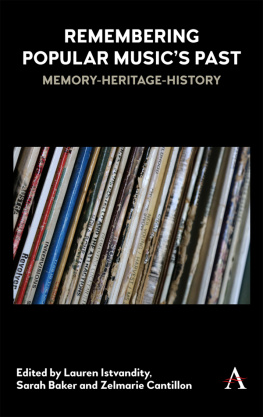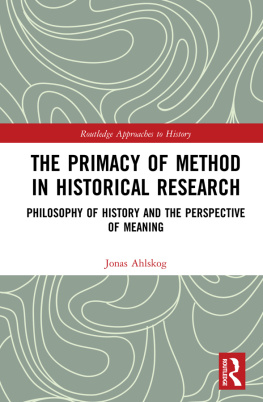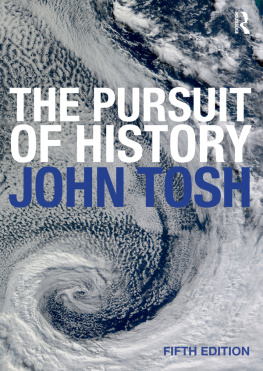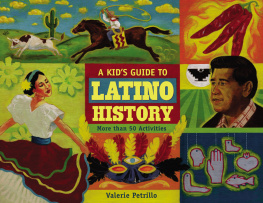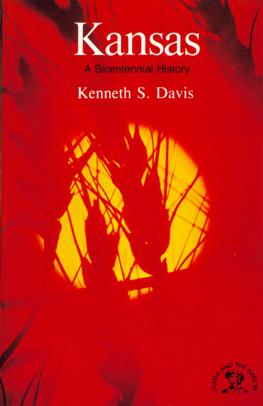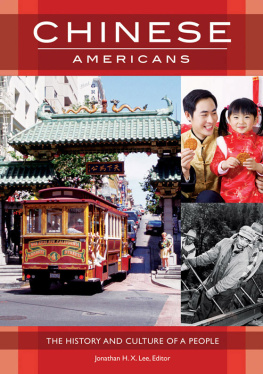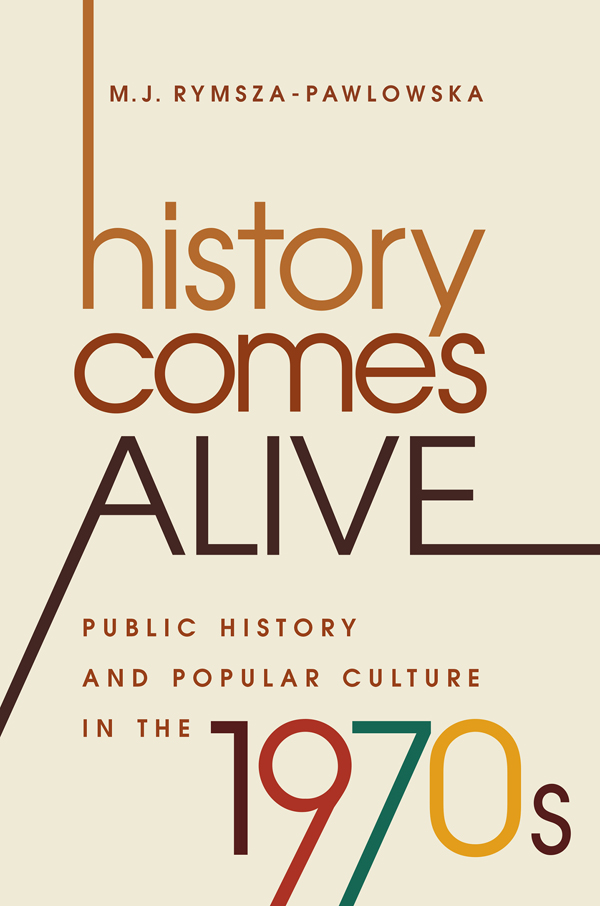Contents
Guide
Pagebreaks of the print version
History Comes Alive
STUDIES IN UNITED STATES CULTURE
Grace Elizabeth Hale, series editor
Series Editorial Board
Sara Blair, University of Michigan
Janet Davis, University of Texas at Austin
Matthew Guterl, Brown University
Franny Nudelman, Carleton University
Leigh Raiford, University of California, Berkeley
Bryant Simon, Temple University
Studies in United States Culture publishes provocative books that explore U.S. culture in its many forms and spheres of influence. Bringing together big ideas, brisk prose, bold storytelling, and sophisticated analysis, books published in the series serve as an intellectual meeting ground where scholars from different disciplinary and methodological perspectives can build common lines of inquiry around matters such as race, ethnicity, gender, sexuality, power, and empire in an American context.
History Comes Alive
Public History and Popular Culture in the 1970s
M. J. Rymsza-Pawlowska
The University of North Carolina Press CHAPEL HILL
This book was published with the assistance of the Authors Fund of the University of North Carolina Press.
2017 The University of North Carolina Press
All rights reserved
Set in Espinosa Nova by Westchester Publishing Services
Manufactured in the United States of America
The University of North Carolina Press has been a member of the Green Press Initiative since 2003.
Library of Congress Cataloging-in-Publication Data
Names: Rymsza-Pawlowska, M. J., author.
Title: History comes alive : public history and popular culture in the 1970s / M.J. Rymsza-Pawlowska.
Other titles: Studies in United States culture.
Description: Chapel Hill : University of North Carolina Press, [2017] | Series: Studies in United States culture | Includes bibliographical references and index.
Identifiers: LCCN 2016050514 | ISBN 9781469633855 (cloth : alk. paper) | ISBN 9781469633862 (pbk : alk. paper) | ISBN 9781469633879 (ebook)
Subjects: LCSH : United StatesHistoryHistoriography. | United StatesHistoryPublic opinion. | History in mass media. | Nineteen seventies. | Historical reenactmentsPsychological aspects.
Classification: LCC E 175 . R 96 2017 | DDC 973dc23
LC record available at https://lccn.loc.gov/2016050514
Chapter 1 was published in an abbreviated form as Broadcasting the Past: History Television, Nostalgia Culture, and the Emergence of the Miniseries in the 1970s United States, Journal of Popular Film and Television 42 (Spring 2014): 8190. Used here with permission.
For my mother,
Elzbieta Rymsza-Pawlowska,
and in memory of my father,
Wojciech Rymsza-Pawlowski
Contents
Illustrations
Acknowledgments
In both spatial aspects and temporal ones, this book exceeds far beyond a couple hundred pages. Its been an active part of my life for several years, and as a set of ideas and questions, for much longer. And so, the people who I wish to thank have been involved both explicitly and implicitly in itsand in mydevelopment.
Foremost, I would like to thank Susan Smulyan and Steven Lubar, whose intellect and generosity have been models to aspire to, as scholars, teachers, and colleagues. I have also benefitted from the wisdom of several careful and rigorous readers and interlocutors who have pushed me to continuously rethink this project in new ways. These include Lynne Joyrich, Alison Landsberg, Ralph E. Rodriguez, Sandy Zipp, Douglas Nickel, Gillian Frank, Matthew Delmont, Matthew Pratt Guterl, Richard Rabinowitz, Pamela Henson, Peter Liebhold, Nora Pat Small, Debra Reid, Terry Barnhart, Lynne Curry, Sace Elder, Charles Foy, Newton Key, Dan Kerr, and the two anonymous readers engaged by the University of North Carolina Press.
Many others have listened, read, questioned, and commented on my work in ways that have been incredibly helpful. My gratitude extends to co-panelists and respondents at annual meetings of the American Studies Association, the American Historical Association, the Organization for American Historians, and the Society for Cinema and Media Studies. I would also like to thank participants in the Mellon-sponsored workshop Affect Unbounded, weekly seminars at the Cogut Center for the Humanities, colloquia at the National Museum of American History and the National Air and Space Museum, the Museums at the Crossroads Summer Institute at the Mathers Museum of World Cultures, the Womens Studies Brown Bag series at Eastern Illinois University, a seminar at the Cit des Tlcoms, and the Modern Culture Workshop at Brown University.
I am grateful to Mark Simpson-Vos, Lucas Church, Jessica Newman, and others at the University of North Carolina Press, who have worked with me on developing the ideas and words that follow. I would also like to thank Grace Hale and the other series editors for Studies in United States Culture.
My work has been supported through fellowships from the Cogut Center for the Humanities at Brown University and the Smithsonian Institution. Likewise, I have found encouragement and community in the Departments of American Studies, Modern Culture and Media, and Theatre Arts and Performance Studies at Brown University, the Department of History and Graduate Program in Historical Administration, and Center for the Humanities at Eastern Illinois University, and, most recently, the Department of History and Graduate Program in Public History at American University. Anita Shelton, Donna Nichols, and Jeff Cabral are just a few of the people who have helped make institutional homes feel like real ones. For several summers, I have been lucky enough to work on this manuscript at the John Nicholas Brown Center for Public Humanities and Cultural Heritage in Providence, Rhode Island, for which I thankagain (and always!)Susan Smulyan.
Some of my favorite moments working on this project have happened in the archive. I would like to thank archivists and librarians at the National Archives in College Park, the Boston Public Library, the City of Boston Archives, the Rhode Island Historical Society Library, Independence Historical National Park in Pennsylvania, the State Archive of Pennsylvania, the David L. Wolper Archive at the University of Southern California, the University of Pennsylvania Architectural Archives, the Gerald R. Ford Presidential Library and Museum, the Richard Nixon Presidential Library and Museum, the Colonial Williamsburg Foundation, the Shippensburg Historical Society, the Massachusetts Institute of Technology Special Collections, and the Smithsonian Institution Archives. I am also grateful to friends who have been generous with their spare rooms and their company, making research trips fun as well as edifying. This list includes Stephen Groening and Andrea Christy, Dawne Langford, Nicole Restaino, and Matthew, Adam, and Kayako Abrams. A special thanks also to Katelyn Dickerson, who, as a graduate assistant at Eastern Illinois University, helped me to secure images and permissions for this text.
I have been fortunate to be a part of communities that have been nurturing, inspiring, and, when needed, distracting. Most especially, Sarah Seidman has been a fantastic colleague and friend since almost the very first day of graduate school. Thanks also to Bonnie Laughlin-Schultz, Brian Mann, Charlotte Pence, Suzie Park, C. C. Wharram, Michelle Liu Carriger, Pooja Rangan, Josh Guilford, Sarah Osment, David Fresko, Sean Dinces, Erin Curtis, Jonathan Olly, and Miel Wilson. My newest community, in the History Department at American University, has been a wonderful place to finish the very last stages of this project.


